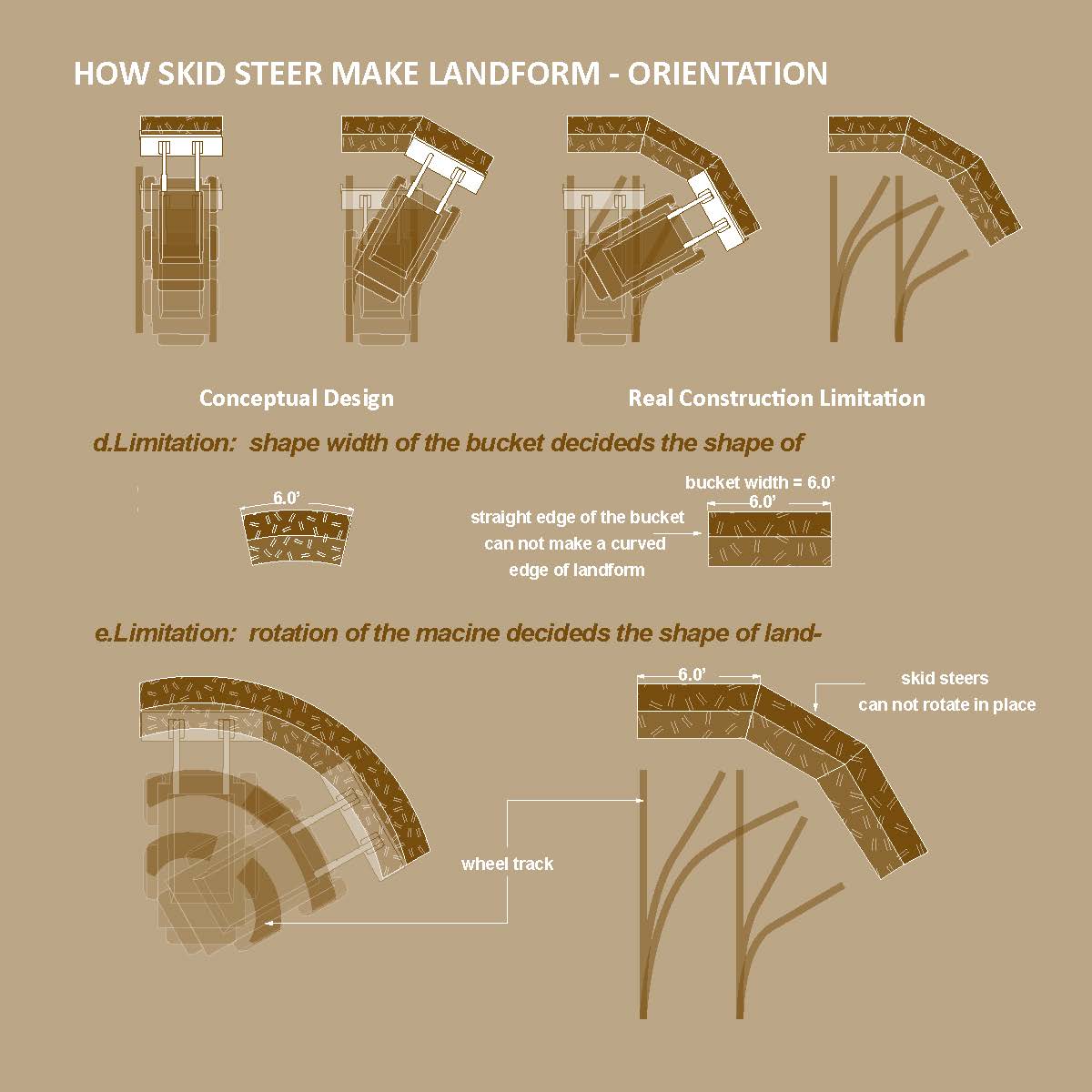Weiqi Li
EARTH-MOVING MACHINES AND THE ART OF THE LANDFORM
Reimagining the Design Process from Designer to Operator
Thesis: In studying the limitations and potentials of construction machinery first-hand, the project argues for new processes of landform-making that emphasize the experience of construction and machine operation and advocate for a much more intimate and reciprocal relationship between design and construction. The design process of schematic design (SD), design development (DD), construction documents (CD), and construction administration (CA) is no longer linear, but rather reciprocal, bending back on itself in new, numerous, and promising ways.
Positioning: Micro-landform making is a landscape architecture strategy commonly used to create diverse microclimates and provide a variation of habitats for biodiversity. In the traditional design process of micro-landform making, conceptual design with grading plan always dominates the initial position, and construction follows, which is linear and contributes to gaps between designers and contractors.This research project tries to provide a new way for the designer-builders in the process of micro-landform making that emphasizes the status of construction and machine operation and advocates more use of construction-led design. Instead of simply understood as synonymous with power and efficiency, machines can be used to assist the design thinking process. The physical dimensions of the machine, such as the size and angle of its bucket, the length and height of the arm, the wheel patterns and the rotation and moving direction of the whole machine etc. can help designers better understand the limitations of site and the construction process and then to think about the potentials of landform making. Compared with the traditional design-guided processes which represented by detailed plans and specifications, the micro-landform design based on construction and machine operation tends to have a loss of accuracy, such as the inability to create precise slopes, corners, and clear boundary lines, etc. Therefore, an additional value of the project is to provide design ideas for machine improvements through the designer’s perspective and help with making more precise landscape topography. And within this process, a feedback loop that mechanical operation guide design, while designers participate in improving the accuracy of construction machines can be formed, and a closer relationship between design and construction can be created.








